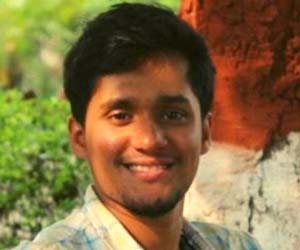On 16th July 2021, Vivekananda International Foundation (VIF) organized a lecture on ‘Introduction to Mīmāṃsā and Vedānta Philosophy’ by Prof Shashi Prabha Kumar, Dean, Sri Sankaracharya Sanskrit Mahavidyalaya, Bharatiya Vidya Bhavan, New Delhi. Prof. Kumar has lectured extensively in India and abroad on various aspects of Indian philosophy and culture. She has thirty-five books, more than one hundred and fifty research papers, and review articles on these topics to her credit.
This talk on Mīmāṃsā and Vedānta Philosophy was conducted as a part of the VIF Lecture Series ‘Philosophy for Beginners’. Mīmāṃsā (Pūrva Mīmāṃsā) and Vedānta (Uttara Mīmāṃsā) are the last two among the Ṣaddarśanas (six schools of Hindu Philosophy). The speaker highlighted that though Mīmāṃsā and Vedānta are considered as ‘sister schools’ like Sānkhya-Yoga or Nyāya-Vaiśeṣika, some of their viewpoints on reality might seem to be poles apart. Throughout the talk, the speaker compared these two schools with the other Darśanas including Chārvāka, Jainism and Buddhism citing points, which were covered in the previous lectures of the series. One of the fundamental differences between Mīmāṃsā and Vedānta schools lies in the fact that while Mīmāṃsā deals with the Brāhmaṇa portion of the Vedas, Vedānta deals with the Upaniṣad portion. In other words, while Vedānta emphasizes on the Jñāna-kāṇḍa, Mīmāṃsā emphasizes on the Karma-kāṇḍa. However, the speaker highlighted that both these philosophies carry aspects of the same stream of thought that connects all the schools of Hindu Philosophy.
After the introduction, the first half of the talk was spent on discussing Mīmāṃsā and the second half on Vedānta, which was followed by a question and answer session.
While talking about Mīmāṃsā, the speaker highlighted that though the Mīmāṃsā literature is not as vast and popular as Vedānta, it is rich in its content. The major source of Mīmāṃsā School is the Sūtra of Ṛṣi Jaimini. The Mīmāṃsā Sūtra comprises 16 chapters and 2644 sūtras. The earliest and most accepted commentary on it is by Śabara Svāmin, which has been distinctly explained by Kumārila Bhaṭṭa and Prabhākara Miśra. This has given rise to a healthy schism between the followers of the doctrine dividing them into two schools. The speaker indicated that according to traditional sources, Prabhākara Miśra was a disciple of Kumārila Bhaṭṭa. Hence, the speaker emphasized the positive liberal approach in the Indian classical thought, where Guru and śiṣya could differ in their perspectives and have healthy debates for the sake of knowledge. The talk noted that the metaphysics of Mīmāṃsā are not much different from Nyāya-Vaiśeṣika Darśanas, other than some additions and omissions by Kumārila Bhaṭṭa. The Pūrva Mīmāṃsākas consider Svarga as their ultimate goal, where there is no mix of suffering. The attainment of Svarga is expressed in the following famous Vedic injunction, “….Svarga Kāmo Yajeta.” Yāgas, fire rituals like Jyōtiṣṭōma Yāga are prescribed and described for the attainment of Svarga in Pūrva Mīmāṃsā. The kinds of such rituals, methods of performing them are explained in detail in the Pūrva Mīmāṃsā discourses. Apart from the epistemologies of preceding Darśanas such as Nyāya, Kumārila accepted two new pramāṇas, which are arthāpatti (presumption) and anupalabdhi (non-apprehension). The speaker also suggested that though Mīmāṃsā borrows certain pramāṇas like upamāna (comparison) or śabda (verbal testimony) from preceding schools, on a closer look the nature of these pramāṇas in Mīmāṃsā are different from them.
Just as Upaniṣad is the last portion of the Vedic corpus, Vedānta is the concluding or culminating section of the Darśanas of Indian Philosophy. The speaker quoted the words of Sarvepalli Radhakrishnan, who said that Vedānta determines the worldview of Hindu thinkers of our time. This also highlights the fact that Vedānta is considered as the result of the final systematization of the Indian Philosophical discourse. While Mīmāṃsā literally means reflection or critical investigation, Vedānta means culmination or essence of the Vedas.
The Sūtra of the Bādarāyaṇa, or the Vedāntasūtra which is otherwise known as Brahmasūtra contains the essential core of spiritual ideas expressed in the Upaniṣads. The speaker mentioned that the list of commentators of Brahmasūtra continues even after the 18th century. Some of the major commentators and diversities within the tradition of Vedānta were mentioned in talk such as Śaṅkarācārya-Advaita, Rāmanujācārya-Viśiṣṭadvaita, Madhvācrya-Dvaita, Vallabhācārya-Śuddhadvaita, Nimbarka-Dvaitadvaita, Acintyabhedabheda-Caitanya Mahāprabhu, etc. The talk briefly outlined the factors that determine the eligibility of the seeker to know Vedānta and what are the requirements that are necessary for one to receive the knowledge and comprehend the subtleties of Vedānta. Vedānta is essentially about self-realisation or realising Brahman, the Sat-Cit-Ānanda Svarūpa (Existence- Consciousness-Bliss), which is veiled by our ignorance. Brahman is conditioned by the Māyāśakti or Māyā-upādi in its role of Īśvara. Here, Māyā is understood as the power of Brahman and avidyā is the ignorance which hinders the means through which one can realize the Brahman. Once this ignorance slips off, the true nature of Brahman will be automatically revealed as it is the basic nature of all entities. In order to experience this subtle nature of reality, a human being must acquire certain prerequisites, certain conditioning, and mastery of the mind, which was outlined in the talk.
The speaker concluded by saying that ultimately, all the Ṣaddarśanas are trying to perceive the same reality from different stations in which they are situated.










Post new comment